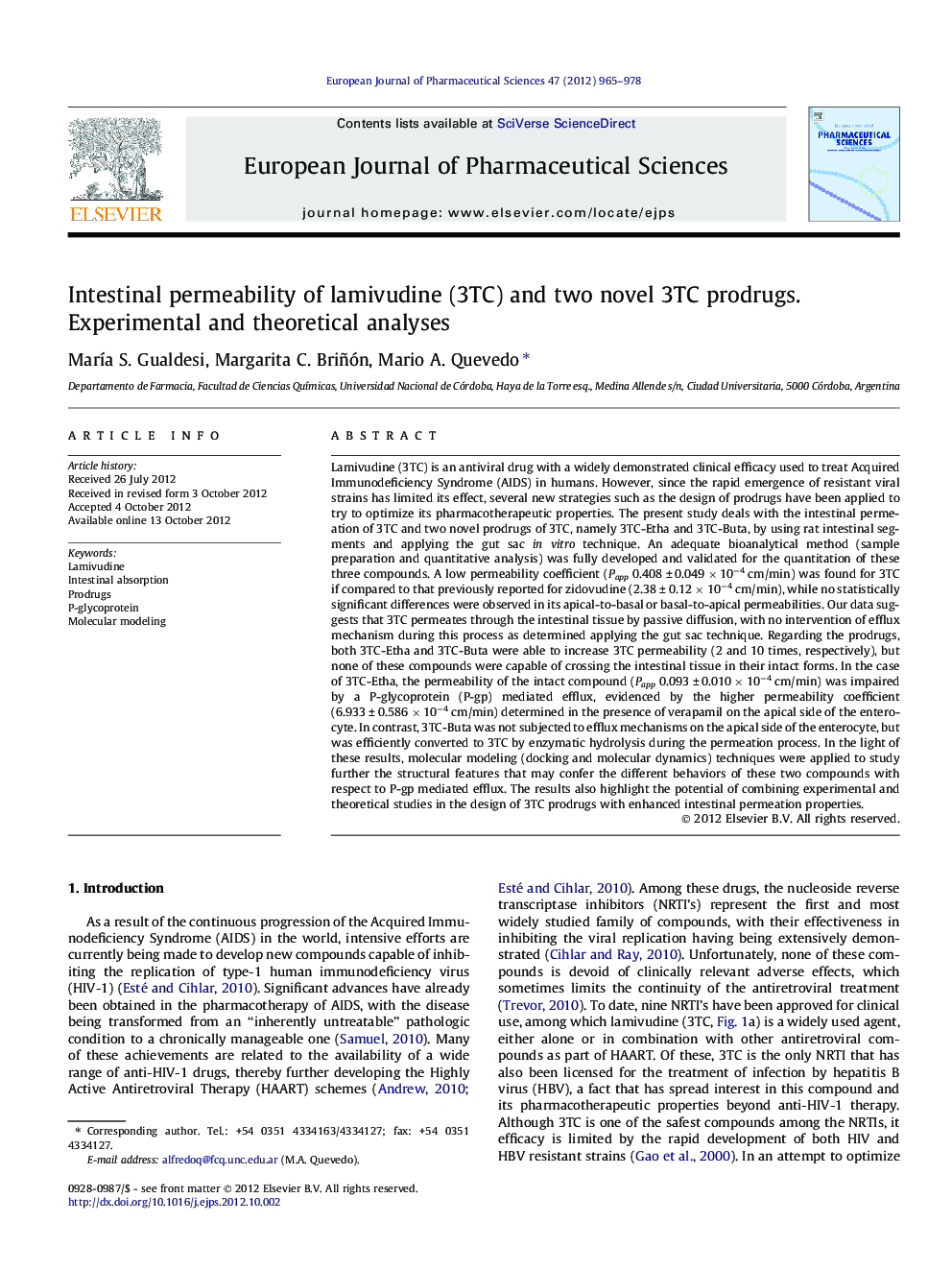| کد مقاله | کد نشریه | سال انتشار | مقاله انگلیسی | نسخه تمام متن |
|---|---|---|---|---|
| 2480807 | 1556213 | 2012 | 14 صفحه PDF | دانلود رایگان |

Lamivudine (3TC) is an antiviral drug with a widely demonstrated clinical efficacy used to treat Acquired Immunodeficiency Syndrome (AIDS) in humans. However, since the rapid emergence of resistant viral strains has limited its effect, several new strategies such as the design of prodrugs have been applied to try to optimize its pharmacotherapeutic properties. The present study deals with the intestinal permeation of 3TC and two novel prodrugs of 3TC, namely 3TC-Etha and 3TC-Buta, by using rat intestinal segments and applying the gut sac in vitro technique. An adequate bioanalytical method (sample preparation and quantitative analysis) was fully developed and validated for the quantitation of these three compounds. A low permeability coefficient (Papp 0.408 ± 0.049 × 10−4 cm/min) was found for 3TC if compared to that previously reported for zidovudine (2.38 ± 0.12 × 10−4 cm/min), while no statistically significant differences were observed in its apical-to-basal or basal-to-apical permeabilities. Our data suggests that 3TC permeates through the intestinal tissue by passive diffusion, with no intervention of efflux mechanism during this process as determined applying the gut sac technique. Regarding the prodrugs, both 3TC-Etha and 3TC-Buta were able to increase 3TC permeability (2 and 10 times, respectively), but none of these compounds were capable of crossing the intestinal tissue in their intact forms. In the case of 3TC-Etha, the permeability of the intact compound (Papp 0.093 ± 0.010 × 10−4 cm/min) was impaired by a P-glycoprotein (P-gp) mediated efflux, evidenced by the higher permeability coefficient (6.933 ± 0.586 × 10−4 cm/min) determined in the presence of verapamil on the apical side of the enterocyte. In contrast, 3TC-Buta was not subjected to efflux mechanisms on the apical side of the enterocyte, but was efficiently converted to 3TC by enzymatic hydrolysis during the permeation process. In the light of these results, molecular modeling (docking and molecular dynamics) techniques were applied to study further the structural features that may confer the different behaviors of these two compounds with respect to P-gp mediated efflux. The results also highlight the potential of combining experimental and theoretical studies in the design of 3TC prodrugs with enhanced intestinal permeation properties.
This work deals with the permeation of the anti-HIV drug lamivudine (3TC) and two novel 3TC prodrugs through rat intestinal segments. Their permeability and P-gp mediated efflux mechanisms were analyzed by means of experimental and theoretical methods.Figure optionsDownload high-quality image (94 K)Download as PowerPoint slide
Journal: European Journal of Pharmaceutical Sciences - Volume 47, Issue 5, 18 December 2012, Pages 965–978